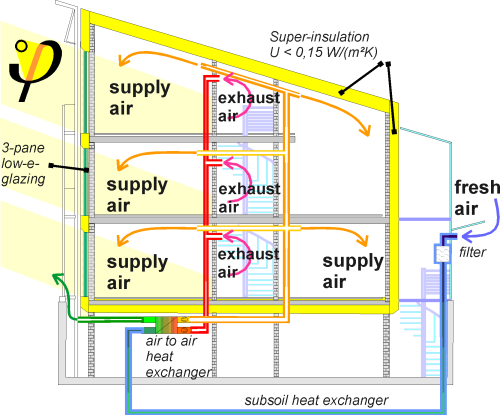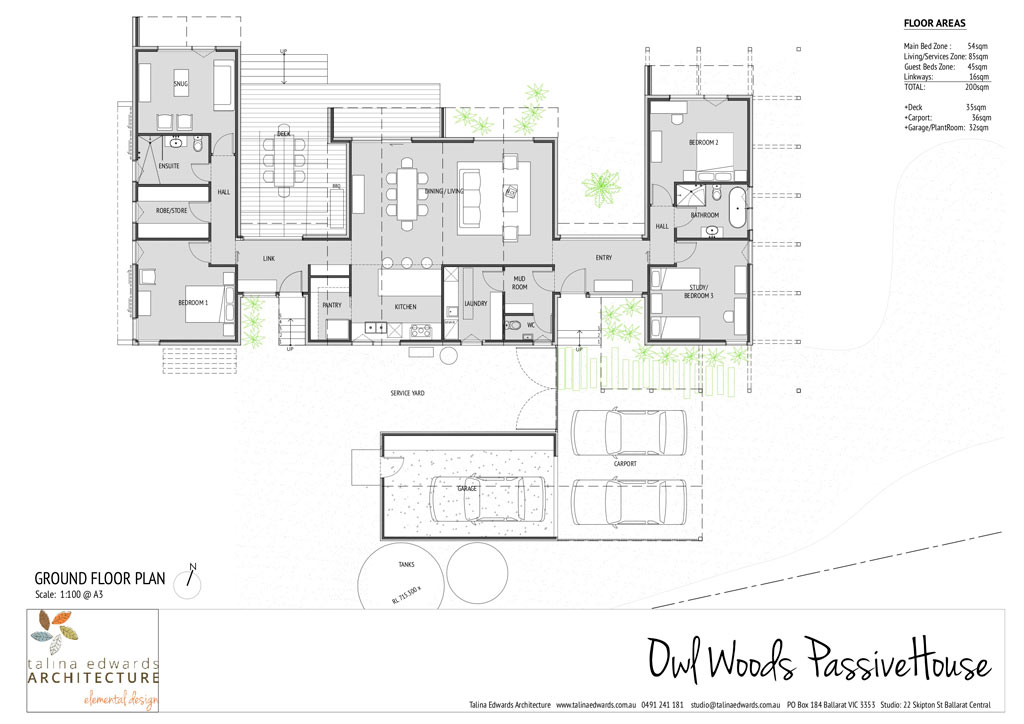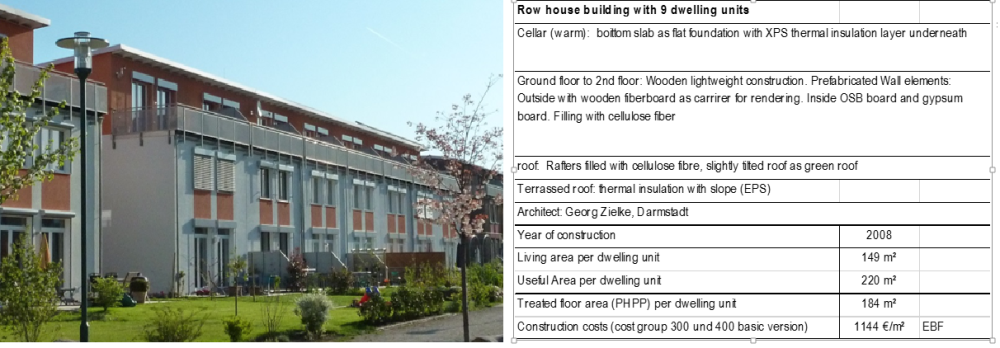Economic Feasibility Of Passive House Design
Passive Houses do not require heating and cooling systems on conventional scales meaning that the money that would have gone towards larger heating and cooling systems can be spent instead on better windows thicker insulation and a ventilation system hallmarks of Passive House design. The idea behind the conception of energy efficient building design is to reduce energy consumption costs and other annual expenses eg.
Feasibility of technology and operational necessities As a starting point passive house design addresses and exploits elements from the buildings surrounding context eg land form sun wind rain vegetation etc and organises the interior of the building to maximise energy savings and.

Economic feasibility of passive house design. The Passive House Institute PHI is an independent research institute that has played an especially crucial role. The air-tightness requirement was reconsidered using dynamic hygrothermal simulations with the aim of avoiding moisture and mold risk in wall assemblies. Although the ultimate goal might be to deliver Passive House-type projects at nil capital premium early projects in any region should expect a premium of up to 10.
To evaluate the economic feasibility of Passive House Design in general all relevant cost data have to be accounted for. Look for other Efficiencies further reduce the load on utilities and the buildings carbon footprint by using efficient. It is essential to show that the life cycle costing of such technologies may indicate economic feasibility.
Passive House reliably delivers up to approximately a 90 reduction in heating and cooling demand and up to a 75 reduction in overall primary energy demand when compared to our existing building stock meant to aggressively meet the climate crisis carbon reduction imperative while making a more comfortable healthy and affordable built environment. The energy demand of indoor swimming pools can be reduced significantly by consistently applying the high energy efficiency approach of the Passive House concept. The answer of passive house cost depends on what goes into the final product.
While most passive house certified buildings are residential passive house design is increasingly being applied to larger commercial and multi-family buildings. Controlled ventilation for a continuous consistent supply of fresh air. The outcome of this study yields a cost-effective performance-based standard that would reduce energy consumption in buildings on a national average by an estimated 86 for heating and 46 for cooling.
Passive House market grow to support the delivery of cost parity or cheaper project. This not only contributes to climate protection but also entails savings for the financial resources of a municipality. The adjusted passive building standard has the same high-level organization as before.
Adaptations have been made to all three main pillars of the passive building approach. Passive Houses not only save money over the long term especially in light of rising energy costs but are surprisingly affordable to begin with. Benefits of Passive House.
Economic Feasibility Evaluation of Building Passive Houses 1048 The new version of the European Union Directive on the energy efficiency of houses 9 requires bringing construction standards and requirements of the European countries for the house construction with minimal energy consumption namely houses with a high level of energy efficiency. The airtightness requirements have been adjusted from a limit of 06 ACH50 to. With the continuous growth of population and expanding of construction China has now.
Benefits of Passive House. Up to 90 less heating and cooling energy use and 60-80 overall energy savings. Cost Effectiveness the extra investment in conservation meets an economic feasibility test based on climate specific data and market conditions.
However this depends very much on the comparative baseline and the required improvements. The Passive House concept is a building design methodology that advocates for a systematic optimization and integration of the building envelope and internal loads in order to achieve a passive yet comfortable performance. High Quality Indoor Air.
The passive house is an efficient way to reduce energy consumption throughout the buildings life cycle and minimize greenhouse gas emissions Schnieders and Hermelink 2006. 20ºC68ºF with no thermostat setbacks in winter night cooling in summer. The result is that builders have A LOT of flexibility when they build to passive house standards.
Vastly reduced utility bills. As an alternative classical verification of the Passive House Standard will continue to be offered for buildings with a heating demand of 15 kWhm²a and a primary energy demand of 120 kWhm²a without any renewable energy generators additionally this corresponds with the category Passive House Classic according to the new PER factor method. Multiple passive houses have been.
Learn more about the Institute and its work. For maintenance during lifetime of the building significantly. In the development of the Passive House concept - the only internationally recognised performance-based energy standard in construction.
Technologies has always been a deterrent for house owners. The peak heating load and system size would be reduced by 77 and the peak cooling load would be reduced by 69. Conservation First designers reduce the load on the heating and cooling systems by investing in passive measures in the building envelope.
Studies show that the economic performance of PV fa-cilities depends very much on the climatic conditions of the region in which they are located 34. The present work demonstrates the convenience of employing economic feasibility assessments together with engineering analyses before applying solar strategies during the design stages in order to convince house owners that these solar technologies can be economically viable. Planning guidelines for Passive House indoor swimming pools.
Operational and Construction Savings.

The Architect Who Designed A Passive House Interview With Talina Edwards Talina Edwards Architecture

A2m Mini Book 2017 Mini Books Passive Design Books

Helpful Infographic Visualizes What A Net Zero Home Looks Like Solar Power House Green Architecture Sustainable Architecture

Economic Feasibility Of Passive House Design

Economic Feasibility Of Passive House Design

Are Passive Houses Cost Effective

How Do You Build The Most Sustainable Home Sustainability Sustainable House Design Sustainable Home Sustainable Buildings

Passivhaus Architect Melbourne Jane Cameron Architects

Passivhaus And Three Options For Mediterranean Passive House Medhaus Download Scientific Diagram

Economic Feasibility Of Passive House Design

Building Big With Wood Again Solar Panels Roof Solar Panels Architecture Standing Seam Metal Roof

Passivhaus And Three Options For Mediterranean Passive House Medhaus Download Scientific Diagram

The World S First Passive House Darmstadt Kranichstein Germany

Optimizing Conventional Buildings Debating Science

Economic Feasibility Of Passive House Design
Passive House Design Declan Noonan Associates

Green Home Upgrades That Can Pay You Back Gilbertdiy Wordpress Com Pinterest Com Gilbertdiy Eco Friendly House Home Upgrades Home Improvement Loans

Passivhaus For Beginners Greenbuildingadvisor
Passive House Design Declan Noonan Associates
Post a Comment for "Economic Feasibility Of Passive House Design"